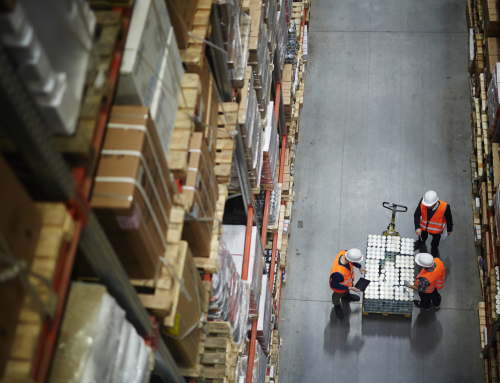In today’s hyper-paced markets, what seemed inevitable or foregone can, with one decision, look less so. Recently, Nike decided to put a renewed focus on brand control and brand building, so it cut ties with Amazon. Is this an anomaly or the start of a trend? News of the recent split set off “alarms in the retail industry” and made analysts question if other brands will follow suit.
A Jefferies analyst told CNBC:
“The move shows us that strong brands realize that traffic driven to their own site is self-sustaining, more profitable, and actually brand enhancing, while traffic and incremental revenue from Amazon.com is less profitable but also less brand enhancing. We believe many strong apparel (and even non-apparel) brands will continue to avoid or curb their relationships with Amazon in the future.”
What’s driving the movement toward brand control
It’s less of a risk for a global brand like Nike, with an established audience of millions, to scrap Amazon in favor of its own direct-to-consumer business, than for a small or medium-sized business to do the same, especially when handling conventionally. Well aware of consumer demand for speedy deliveries and free shipping, they may question how they could pull off a Nike-move. But just like Nike tired of fake listings that left official products buried on the site, small businesses have their fair share of complaints with Fulfillment by Amazon. Seller fees, inconsistencies in customer service, and a loss of brand control have prompted some to leave.
And the latter — brand control — is gaining in significance as consumers increasingly value personalization and developing a relationship with their brands of choice. To cite the Jefferies analyst again, “Amazon is just a traffic aggregator that reduces friction in consumption … it doesn’t build communities.”
So what’s driving the movement toward more brand control? Let’s take a closer look at three trends:
1. Speed is not everything
Amazon’s one-day delivery pledge has come at a steep price for the e-commerce giant. Small businesses certainly cannot sustain the cost of offering free overnight shipping, but the 2019 Deloitte Holiday Retail Survey offers good news. According to the survey, as many as 85% of consumers prefer free shipping over fast shipping. Among those, 80% said they are willing to wait three days or more for order delivery.
Deloitte notes: “This last-mile supply chain, or how product is delivered to consumers, has become another key battleground. In early communications and advertising for the 2018 and 2019 holiday seasons, delivery and fulfillment communications are moving to the forefront. Apart from last-minute gift purchases, consumers have clearly shown that free over fast for the holidays is their preferential delivery option.”
This fact is important and should instill confidence in business owners that want to step out of the Amazon shadow and take control of their brand and have the option to see, understand, and control their whole supply chain.
2. Personalization rules
Recent PwC research shows companies that prioritize experience can charge a premium of up to 16% for their products and services. The emphasis on “experience” has gained such traction that it has given rise to a new performance management metric, return on experience (ROX).
Strategy+Business writes: “…the big news is that increasingly, customers expect curated, channel-agnostic, socially conscious, social media–powered experiences — meaning that CX initiatives are becoming far more critical to long-term success in both B2C and B2B markets.”
At the heart of the experience metric is a focus on personalization. Consumers are accustomed to being catered to. Few of us can go a day without seeing Facebook ads based on our search history, targeted display ads that populate the margins of our go-to sites, and marketing emails addressed in our name. The most successful companies create communities of devoted followers or brand ambassadors.
As personalization and — not to be overlooked — customization become more central to success, it makes sense to extend that level of service to the last stage of the product journey. Why let another company take all the credit for the delivery when you put in all the hard work to make the sale happen? A personalized note inside a branded box is a simple but impactful way of saying “thanks” and serves as a subtle reminder of where the product actually came from. It completes the experience puzzle.
3. Flexible warehousing opens new doors
In recent years, on-demand warehousing has allowed supply chain managers to add a flexible variable to their warehouse portfolios. For businesses that seek to get closer to their customer base to cut shipping costs and speed up delivery, they can now do so without signing a long-term warehouse lease. The flexible option offers an expedient way to scale up during peak season or explore new markets before making a more permanent commitment. It also plays right into the trend of brand control. The on-demand warehousing model allows businesses full control of their supply chain and brand.
Take the Warehowz cloud-based platform, for instance. Our platform allows for a single channel into every market with vendors that will comply with a single KPI and process, so your business and your customer base have a completely uniform experience, despite the region or 3PL. Our network gives Warehowz clients immediate access to nationwide end-to-end transportation, supply chain analysis, and data analytics providing custom logistics solutions. With such a network at your disposal, you maintain brand control and can capitalize on facts such as the Capgemini finding that 73% of consumers think receiving a delivery in a convenient time slot is more important than receiving it quickly.
Your brand is everything. We can help you build it. Contact Warehowz today to learn more.

Read more:
How CRE brokers can groom leads with an on-demand warehousing partner
3 product companies, 3 ways to unlock supply chain flexibility
Airbnb for warehousing is not quite like booking a vacation rental. Here’s why.



